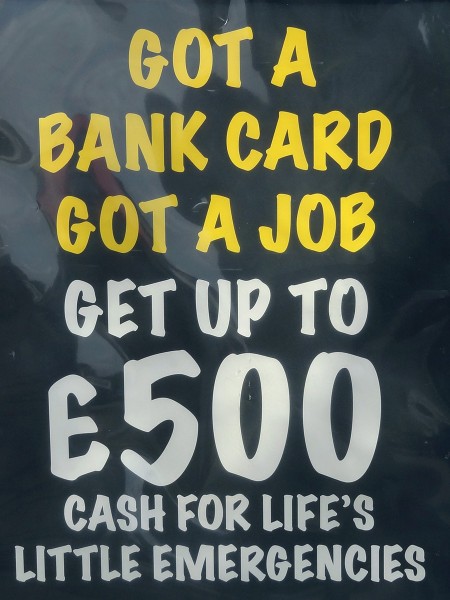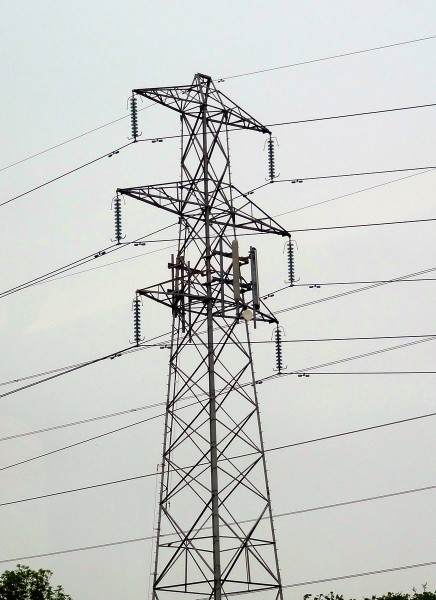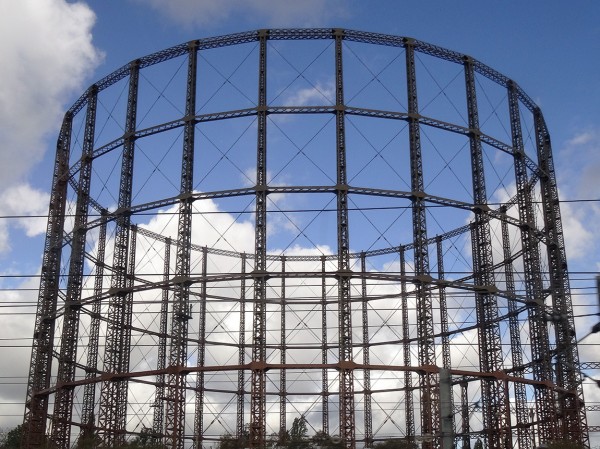 In April 2015 the European Commission (EC) opened a formal investigation into the behaviour of Google in the market for smartphones and tablets. On the 20th April Google was sent a preliminary judgment (referred to formally as a Statement of Objections) in which it was accused of abusing its dominant market position. The European Commissioner argued that the case was similar to the famous and protracted investigation into the conduct of Microsoft.
In April 2015 the European Commission (EC) opened a formal investigation into the behaviour of Google in the market for smartphones and tablets. On the 20th April Google was sent a preliminary judgment (referred to formally as a Statement of Objections) in which it was accused of abusing its dominant market position. The European Commissioner argued that the case was similar to the famous and protracted investigation into the conduct of Microsoft.
In the early 2000s Microsoft had a dominant position in the market for desktop operating systems. It has been estimated that 97% of all computing devices at the time used Microsoft Windows. This market power attracted the attention of the EC who accused the company of using its dominance in the operating systems market to restrict competition in complementary markets for software such internet browsers and media players. This led to a complex legal battle between the two parties.
Windows is proprietory software and computer manufacturers have to pay Microsoft a licence fee to install it on their machines. Before the rulings by the EC, Microsoft could make a licence for Windows conditional on other Microsoft software such as Internet Explorer and Media Player being pre-installed. This is known as bundling and in this case the EC came to the conclusion that it restricted competition. The European Commissioner, Margrethe Vestager recently stated that
“If Microsoft’s media player was already there when you bought a PC, it would be hard to persuade people to even try an alternative, so innovators would be at a big disadvantage”
Microsoft lost most of its competition battles with the EC and had to pay a total of €2.2 billion in various fines. It was also forced to change its conduct. For example, the EC instructed Microsoft to provide its users with a choice of internet browsers.
The marketplace for operating systems has gone through some significant changes since the early 2000s. By 2016 Microsoft’s market share had fallen to 26 per cent. One of the major reasons for this decline has been the increasing popularity of smartphones and tablets.
Google’s Android operating system dominates the mobile market with a market share of over 80 per cent. However, the economics of the Android operating system are very different from those of Windows. Unlike Windows, Android is an example of ‘open-source software’. This means that, rather than having to obtain a licence fee, mobile handset or tablet manufacturers can freely install Android on their devices and are not obliged to pre-install other Google software – both Amazon and Nokia have done this. ,
Another major difference is that it is relatively straightforward for rival firms to develop software that can run on Android. Microsoft was accused of making it very difficult for rival software companies to develop products that would run smoothly on the Windows operating system.
It would appear far easier for rival firms to compete with Google than it ever was with Microsoft when it had a dominant market position. It might therefore seem surprising that the EC has accused Google of abusing its dominant market position.
Rather than any restrictions surrounding the licencing conditions for the operating system the EC’s objections to Google’s behaviour focus on its licencing conditions for other proprietary software products it provides. In particular, the EC has focused on the Google Play Store.

The pre-installation of the Google Play Store is seen as vital to the commercial success of any Android phone. Google Play Store was launched in 2012 and brought three previously separate services together – Android Market, Google Music and Google eBookstore. It is the official app store for all users of a device with an Android operating system. It has been argued that a mobile phone store would not stock an Android phone unless it had Google Play Store pre-installed because it is so highly valued by customers.
Therefore it is vital for Android smartphone and tablet manufacturers to obtain a licence for the Play Store. The conditions for obtaining a licence are outlined in the Mobile Application Distribution Agreement. This specifies that a number of other Google apps must also be pre-installed on the device in order for a licence to be granted for the Play Store. These apps include Gmail, Google Chrome, Google Drive, Google Hangouts, Google Maps, Google Search and YouTube. The manufacturer is free to install any other non-google apps.
The EC has specifically objected to the condition that Google Search has to be installed and set as the default search engine. It is concerned that this that will make it very difficult for other search services to compete with Google because (1) manufacturers will have limited incentives to pre-install any competing search engines and (2) consumers will have less incentive to download competing search engines.
The EC has also expressed concerns that the pre-installation of Google Chrome as the mobile browser will also have a negative impact on competition and innovation in this market.
Companies are given 12 weeks to respond after they have received a preliminary judgment. If they do not accept the objections, then the EC will take several months to come to a final ruling and suggest some appropriate remedies. In this case, the most likely remedy is the removal of the licence conditions for the Google Play Store. If Google appeals the ECs decision to the General Court of the EU, it could take years until a final judgment is made.
Murad Ahmed, the European Technology Correspondent at the Financial Times commented that
“One lesson Google might want to learn from Microsoft’s example is while it fights the EU watchdog it is not overtaken by a less distracted competitor.”
Articles
Europe v Google: how Android became a battleground The Guardian (20/4/16)
EU accuses Google of using Android to skew market against rivals The Guardian (20/4/16)
Google faces EU charge over Android ‘abuse of dominance’ BBC News (20/4/16)
Google hit with EU competition charges for ‘abusing’ dominant position with Android Independent (20/4/16)
Everything you need to know about Google and its EU battle The Telegraph (20/4/16)
Questions
- Draw a diagram to compare and contrast the price and quantity in a competitive market with a situation where a firm has market dominance. Clearly state any assumptions you have made in the analysis.
- What factors does the EC consider when judging if a firm has a dominant position in the market?
- This blog has focused on one aspect of Google’s behaviour/conduct that has raised concerns with the EC. What other elements of Google’s conduct has the European Commission objected to?
- Explain the difference between pure and mixed bundling.
- What impact does bundling have on consumer welfare?
 A few months ago, in a post on this site I reported that the Competition Commission (CC) had completed their provisional investigation into the concrete and cement market in Great Britain. As I discussed, they concluded that coordination between the main cement producers was resulting in high prices. They are particularly concerned about the impact of high prices in this market because:
A few months ago, in a post on this site I reported that the Competition Commission (CC) had completed their provisional investigation into the concrete and cement market in Great Britain. As I discussed, they concluded that coordination between the main cement producers was resulting in high prices. They are particularly concerned about the impact of high prices in this market because:
Cement is an essential product for the construction and building sectors and the amount of such work that is funded by the public purse only underlines the importance of ensuring that customers get better value for money. We believe our measures can bring about a substantial, swift and lasting increase in competition in this economically vital market.
The next step was for the CC to consider how they could remedy the situation and hopefully improve competition in the market.
Earlier this month, the CC announced the remedies they intend to impose. Having previously suggested that they intended to impose hard-hitting measures, they have been true to their word. The market leader, Lafarge Tarmac, will be required to sell one of its cement plants to facilitate a new entrant into the market. According to Professor Martin Cave, the CC’s Deputy Chairman who led the inquiry:
We believe that the entry of a new, independent cement producer is the only way to disturb the established structure and behaviour in this market which has persisted for a number of years and led to higher prices for customers.
In addition, the CC is also putting in place measures to limit the publication of production data and price announcements. It is hoped that these measures will reduce transparency in the market.
However, Lafarge Tarmac disagrees with the sale they are being forced to make. This is in part because, as I discussed in the earlier post, they had previously been allowed by the CC to form a joint venture (JV) with one its main rivals:
We are disappointed that the Competition Commission has asked Lafarge Tarmac to divest another cement plant only a year after it allowed the creation of the JV. This is not reasonable or proportionate and we have not been given a fair opportunity to defend our position.
In addition, Lafarge Tarmac is quoted in the above article as suggesting that the end result of the CC’s intervention will be harm to consumers. It will be extremely interesting to monitor how this market develops.
Articles
Competition Commission confirms plan for new cement producer The Construction Index, (14/01/14)
Competition Commission improves competition in the UK. Again. Global Cement, (22/01/14)
Report
Aggregates, cement and ready-mix concrete market investigation, Final report, Competition Commission, (14/01/14)
Questions
- Why might the publication of production data and price announcements help to facilitate coordination between firms?
- Would you expect the new entrant or the measures to limit the publication of production data and price announcements to have more impact on competition in the market?
- Using a supply and demand model, describe the impact the CC’s intervention could have on the construction market.
 In an apparent U-turn, the Chancellor, George Osborne, has decided to cap the interest rates and other charges on payday loans and other short-term credit. As we have seen in previous news items, the sky-high interest rates which some of the poorest people in the UK are being forced to pay on these loans have caused outrage in many quarters: see A payday enquiry and Kostas Economides and the Archbishop of Canterbury. Indeed, the payday loan industry has been referred by the OFT to the Competition Commission (CC). The CC is required to report by 26 June 2015, although it will aim to complete the investigation in a shorter period.
In an apparent U-turn, the Chancellor, George Osborne, has decided to cap the interest rates and other charges on payday loans and other short-term credit. As we have seen in previous news items, the sky-high interest rates which some of the poorest people in the UK are being forced to pay on these loans have caused outrage in many quarters: see A payday enquiry and Kostas Economides and the Archbishop of Canterbury. Indeed, the payday loan industry has been referred by the OFT to the Competition Commission (CC). The CC is required to report by 26 June 2015, although it will aim to complete the investigation in a shorter period.
It was becoming increasingly clear, however, that the government would not wait until the CC reports. It has been under intense pressure to take action. But the announcement on 25 November 2013 that the government would cap the costs of payday loans took many people by surprise. In fact, the new body, the Financial Conduct Authority, which is due to start regulating the industry in April 2014, only a month ago said that capping was very intrusive, arguing that it could make it harder for many people to borrow and push them into the hands of loan sharks. According to paragraph 6.71 of its consultation paper, Detailed proposals for the FCA regime for consumer credit:
The benefits of a total cost of credit cap has been looked at by the Personal Finance Research Centre at the University of Bristol. This report highlighted that 17 EU member states have some form of price restriction. Their research was ambiguous, on the one hand suggesting possible improved lending criteria and risk assessments. On the other, prices may drift towards a cap, which could lead to prices increasing or lead to a significant reduction in lenders exercising forbearance. Neither of these latter outcomes would be beneficial for consumers. Clearly this is a very intrusive proposition and to ensure we fully understand the implications we have committed to undertake further research once we begin regulating credit firms and therefore have access to regulatory data.
The government announcement has raised questions of how imperfections in markets should be dealt with. Many on the centre right argue that price controls should not be used as they can further distort the market.  Indeed, the Chancellor has criticised the Labour Party’s proposal to freeze gas and electricity prices for 20 months if it wins the next election, arguing that the energy companies will simply get around the freeze by substantially raising their prices before and after the 20 months.
Indeed, the Chancellor has criticised the Labour Party’s proposal to freeze gas and electricity prices for 20 months if it wins the next election, arguing that the energy companies will simply get around the freeze by substantially raising their prices before and after the 20 months.
Instead, those on the centre right argue that intervention should aim to make markets more competitive. In other words, you should attempt not to replace markets, but to make them work better.
So what is the reasoning of the government in capping payday loan charges? Does it feel that, in this case, there is no other way? Or is the reasoning political? Does it feel that this is the most electorally advantageous way of answering the critics of the payday loan industry?
Webcasts and podcasts
 Payday Loans To Be Capped By Government Sky News (25/11/13)
Payday Loans To Be Capped By Government Sky News (25/11/13)
 New law to cap cost of payday loans BBC News, Robert Hall (25/11/13)
New law to cap cost of payday loans BBC News, Robert Hall (25/11/13)
 Osborne: ‘Overall cost’ of payday loans to be capped BBC Today Programme (25/11/13)
Osborne: ‘Overall cost’ of payday loans to be capped BBC Today Programme (25/11/13)
 George Osborne announces cap on payday loan charges amid concerns ITV News (25/11/13)
George Osborne announces cap on payday loan charges amid concerns ITV News (25/11/13)
Articles
UK to cap payday lenders’ interest charges Reuters, Steve Slater, Paul Sandle, Kate Holton and William James (25/11/13)
Capping payday loans: from light touch to strong arm Channel 4 News, Faisal Islam (25/11/13)
Payday loans: New law to cap costs BBC News (25/11/13)
Payday loan ‘risk to mortgage applications’ BBC News (26/11/13)
Q&A: Payday loans BBC News (25/11/13)
George Osborne is playing social democratic catch-up on payday loans The Guardian, Larry Elliott (25/11/13_
Payday loans cap: George Osborne caves in following intervention led by Archbishop of Canterbury Independent, Oliver Wright (25/11/13)
The principle, the practice and the politics of fixing payday loan prices: why? And why now? Conservative Home, Mark Wallace (25/11/13)
George Osborne and the risky politics of chutzpah New Statesman, Rafael Behr (26/11/13)
Chancellor too quick off the mark on payday lending cap The Telegraph, James Quinn (25/11/13)
Crap and courage of convictions: the political problem with Osborne’s payday loan plan Spectator, Isabel Hardman (26/11/13)
Payday loan calculator
Payday loan calculator: how monthly interest can spiral BBC Consumer (7/11/13)
Questions
- What types of market failing exist in the payday loan industry?
- What types of controls of the industry are being proposed by George Osborne?
- What is the experience of Australia in introducing such controls?
- What alternative forms of intervention could be used to tackle the market imperfections in the industry?
- What were the proposals of the FCA? (See paragraph 6.6 in its document, Detailed proposals for the FCA regime for consumer credit.)
- According to a representative example on Wonga’s website, a loan of £150 for 18 days would result in charges of £33.49 (interest of £27.99 and a fee of £5.50). This would equate to an annual APR of 5853%. Explain how this APR is calculated.
- The proposal is to allow a relatively large upfront fee and to cap interest rates at a relatively low level, such as 4% per month, as is the case in Australia. Explain the following comment about this in the Faisal Islam article above: “The upfront fee, in theory, should change the behavioural finance of consumers around taking the loan in the first place (there are ways around this though). So this is an intervention based not on lack of competition, but asymmetries of information in consumer finance.”
- Comment on the following statement by Mark Wallace in the Conservative Home article above: “If overpriced payday loans should be capped, why not overpriced DVDs, sandwiches or, er, energy bills?”
- Compare the relative advantages and disadvantages of George Osborne’s proposal with that of Justin Welby, the Archbishop of Canterbury (see the news item, Kostas Economides and the Archbishop of Canterbury).

As Elizabeth noted in Fuelling the Political Playing Field, there has been much debate recently about energy prices in the UK. Four of the ‘Big Six’ energy companies have now announced price rises. They average 9.1% – way above the rate of consumer price inflation and even further above the average rate of wage increases. What is more, they are considerably above the rate of increase in wholesale energy prices, which, according to Ofgem, have risen by just 1.7% in the past year.
The bosses of the energy companies have appeared before the House of Commons Energy and Climate Change Select Committee to answer for their large price increases. The energy companies claim that the increases are necessary to cover not only rising wholesale prices, but also green levies by the government and ‘network charges’ for investments in infrastructure.  However, it is hard to see how, even taking into account all three of these possible sources of cost increases, the scale of price increases can be justified.
However, it is hard to see how, even taking into account all three of these possible sources of cost increases, the scale of price increases can be justified.
Another possible explanation for the price hikes is that they are partly the result of a system of transfer pricing (see). The energy industry is vertically integrated. Energy companies are not only retailers to customers, but also generators of electricity and wholesale shippers of gas. It is possible that, by the producing/shipping arms of these companies charging higher prices to their retailing arms, the retailers’ costs do indeed go up more than the wholesale market cost. The result, however, is higher profits for the producing arms of these businesses. In other words, a higher transfer price allows profits to be diverted from each company’s retailing arm to its producing arm.
 This is an argument for making the wholesale market more competitive and for stopping the by-passing of this market by producing arms of companies selling directly to their retailing arms. What the companies are being accused of is an abuse of market power and possibly of colluding with each other, at least tacitly, to support the continuation of such a practice.
This is an argument for making the wholesale market more competitive and for stopping the by-passing of this market by producing arms of companies selling directly to their retailing arms. What the companies are being accused of is an abuse of market power and possibly of colluding with each other, at least tacitly, to support the continuation of such a practice.
So is the answer a price freeze, as proposed by the Labour Party? Is it an investigation of the energy market by the Competition Commission? Or is it, at least as a first step, much more openness by the energy companies and transparency about their pricing practices? Or is it to encourage consumers to switch between energy companies, including the smaller ones, which at present account for less than 5% of energy supply? The videos, podcasts and articles consider these issues.
Webcasts and Podcasts
 Energy bosses blame high bills on wholesale prices Channel 4 News, Gary Gibbon (29/10/13)
Energy bosses blame high bills on wholesale prices Channel 4 News, Gary Gibbon (29/10/13)
 Why are energy bosses being questioned? BBC News, Stephanie McGovern (29/10/13)
Why are energy bosses being questioned? BBC News, Stephanie McGovern (29/10/13)
 Key questions Big Six energy companies must answer The Telegraph, Ann Robinson (29/10/13)
Key questions Big Six energy companies must answer The Telegraph, Ann Robinson (29/10/13)
 Energy bosses offer excuses for prices rises The Telegraph (29/10/13)
Energy bosses offer excuses for prices rises The Telegraph (29/10/13)
 Energy bosses face MPs over price rises BBC News, John Moylan (29/10/13)
Energy bosses face MPs over price rises BBC News, John Moylan (29/10/13)
 Energy boss ‘can’t explain’ competitors’ price hikes The Telegraph (29/10/13)
Energy boss ‘can’t explain’ competitors’ price hikes The Telegraph (29/10/13)
 Ovo boss: Competition Commission would take too long BBC News (30/10/13)
Ovo boss: Competition Commission would take too long BBC News (30/10/13)
 Dale Vince: Energy market is ‘dysfunctional’ BBC Today Programme (30/10/13)
Dale Vince: Energy market is ‘dysfunctional’ BBC Today Programme (30/10/13)
 Tony Cocker: Public mistrust energy industry BBC Today Programme (30/10/13)
Tony Cocker: Public mistrust energy industry BBC Today Programme (30/10/13)
 Ed Davey: Energy deals not just for ‘internet savvy’ BBC Today Programme (31/10/13)
Ed Davey: Energy deals not just for ‘internet savvy’ BBC Today Programme (31/10/13)
Articles
Energy giants ‘charge as much as they can get away with’ The Telegraph, Peter Dominiczak (29/10/13)
UK energy markets need perestroika Financial Times (27/10/13)
Britain’s energy utilities must embrace glasnost Reuters, John Kemp (29/10/13)
Small energy firms ‘escape levies’ BBC News (30/10/13)
Is the energy market structurally flawed? BBC news, Robert Peston (30/10/13)
The energy market needs a Competition Commission investigation Fingleton Associates, John Fingleton (12/10/13)
Energy firms raised prices despite drop in wholesale costs The Guardian, Rowena Mason (29/10/13)
Only full-scale reform of our energy market will prevent endless price rises The Observer, Phillip Lee (26/10/13)
Energy Giants Blame Rising Bills On Green ‘Stealth Taxes’ Huffington Post, Asa Bennett (29/10/13)
Big Six energy firms ‘like cartel’ Belfast Telegraph (30/10/13)
Energy boss says he hasn’t done sums on green levies The Telegraph, Georgia Graham (30/10/13)
Graphic: How your energy bills have soared in ten years The Telegraph, Matthew Holehouse (30/10/13)
British energy suppliers’ explanations for price hikes just don’t add up The Guardian, Larry Elliott (31/10/13)
The 18th energy market investigation since 2001: Will this one be different? The Carbon Brief, Ros Donald (31/10/13)
Energy: Is there enough competition in the market? BBC News, Hugh Pym (26/11/13)
Information and Reports
Wholesale [electricity] market Ofgem
Wholesale [gas] market Ofgem
Response on wholesale energy costs Ofgem Press Release (29/10/13)
Response to Government’s Annual Energy Statement Ofgem Press Release (31/10/13)
Real Energy Market Reform The Labour Party
Questions
- Why may the costs of energy paid by the energy retailers to energy producers/shippers have risen more than the wholesale price?
- Explain what is meant by transfer pricing. How could transfer pricing be used to divert profits between the different divisions of a business?
- How can transfer pricing be designed by multinational companies to help them minimise their tax bills?
- Why is policing transfer pricing arrangements notoriously difficult?
- What evidence is there to show that switching between retailers by customers can help to drive retail energy prices down?
- How did the old electricity pool system differ from the current wholesale system?
- Should electricity companies be forced to pool the electricity they generate and not sell it to themselves through bilateral deals?
- Comment on the following: “The current electricity trading arrangements ‘create the very special incentive for the oligopolists. …The best of all possible worlds is where nobody invests. As supply and demand close up, the price spikes upwards, and supernormal profits result.'”
 When people take out loans they typically do so to spend and with the UK economy in its current state, many would argue that this is a good thing. The ‘payday loan’ industry took advantage of the weak economy and the squeezed households in the UK and for the past few years, we have seen constant adverts that will appeal to many households. But, is the industry as competitive as the adverts would have us believe?
When people take out loans they typically do so to spend and with the UK economy in its current state, many would argue that this is a good thing. The ‘payday loan’ industry took advantage of the weak economy and the squeezed households in the UK and for the past few years, we have seen constant adverts that will appeal to many households. But, is the industry as competitive as the adverts would have us believe?
An inquiry into this industry has been on-going for some time, and it has now been referred to the Competition Commission, due to ‘deep-rooted problems with the way competition works’. For some, a payday loan is a short term form of finance, but for others it has become a way of living that has led to a debt spiral. Frank McKillop, policy manager at Abcul said:
There is a clear demand for instant credit and across the country we are increasingly seeing members who have debts with multiple payday lenders and a record of rolling over debts, or going to one payday lender to clear the debt to another.
One problem identified by the OFT is that customers have found it difficult to compare costs and this has led, in some cases, to customers paying back significantly more than they originally thought. Customers being unable to repay loans will ring warning bells for many people, with no-one wanting a return to the height of the credit crunch.
 The OFT has criticized payday loan companies for competing not on costs, but on the speed of approval and using certain unapproved tactics as part of their advertising. The selling point of such companies is that you can have the money in a very short time period. However, the criticism is that this leads to loans being given to those who are unable to afford them. Key credit checks are not being done and with late night texts being sent to often financially vulnerable people, it is no wonder that complaints have been received. In a statement, the OFT said:
The OFT has criticized payday loan companies for competing not on costs, but on the speed of approval and using certain unapproved tactics as part of their advertising. The selling point of such companies is that you can have the money in a very short time period. However, the criticism is that this leads to loans being given to those who are unable to afford them. Key credit checks are not being done and with late night texts being sent to often financially vulnerable people, it is no wonder that complaints have been received. In a statement, the OFT said:
The competitive pressure to approve loans quickly may give firms an incentive to skimp on the affordability assessment which is designed to prevent irresponsible lending and protect consumers.
[the business models of companies were] predicated on making loans which are unaffordable, leading to borrowers paying far more than expected through rollovers, additional interest and other charges.
While payday loans are legal and there are many companies offering them, it is what they are competing over, which seems to be in question. The industry itself has begun to change its practices, providing more information to customers, only allowing loans to be rolled over three times and the potential to freeze repayments if the customer gets into financial difficulty. If more stringent checks are completed and hence timing does not become the only grounds for competition, then the problems above may become less significant. With the ongoing OFT inquiry into the practices of the payday loan industry and the continuing demand for such financing, it is likely that we will see much more of both the good and the bad that it has to offer. The following articles consider the investigation.
Webcasts
 Balls warns against payday loans ‘blank cheque’ BBC News (27/6/13)
Balls warns against payday loans ‘blank cheque’ BBC News (27/6/13)
 Payday lender investigation could be delayed by bureaucracy Telegraph, Steve Hawkes (27/6/13)
Payday lender investigation could be delayed by bureaucracy Telegraph, Steve Hawkes (27/6/13)
 Payday lenders to face ‘tougher restrictions’ on advertising BBC News, Simon Gompertz (1/7/13)
Payday lenders to face ‘tougher restrictions’ on advertising BBC News, Simon Gompertz (1/7/13)
 Payday lending rates BBC News, Julio Martino and Stella Creasy (2/7/13)
Payday lending rates BBC News, Julio Martino and Stella Creasy (2/7/13)
Articles
Regulator to investigate payday loan industry Financial Times, Elaine Moore and Robert Cookson (27/6/13)
Q&A: Payday loans BBC News (31/5/13)
Payday loans: reining in an industry that is a law unto itself Guardian (27/6/13)
Payday loans industry to face competition inquiry BBC News (27/6/13)
Payday loans firms face competition inquiry Sky News (27/6/13)
Payday loans market faces competition inquiry Guardian, Hilary Osborne (27/6/13)
OFT refers payday loans to Competition Commission Scotsman, Jane Bradley (27/6/13)
Five reasons why we all need to worry about payday lenders Telegraph, Emma Simon (27/6/13)
OFT documents
Payday lending compliance review Office of Fair Trading (27/6/13)
Questions
- Into which market structure would you place the payday loans industry? Make sure you justify your answer.
- What is the role of the (a) the OFT and (b) the Competition Commission? Do these authorities overlap?
- What part does advertising play in this industry?
- To what extent is the payday loan industry a possible cause of another credit crunch?
- Why has the OFT referred this industry to the Competition Commission?
- To what extent are payday loans an essential part of an economy?
 In April 2015 the European Commission (EC) opened a formal investigation into the behaviour of Google in the market for smartphones and tablets. On the 20th April Google was sent a preliminary judgment (referred to formally as a Statement of Objections) in which it was accused of abusing its dominant market position. The European Commissioner argued that the case was similar to the famous and protracted investigation into the conduct of Microsoft.
In April 2015 the European Commission (EC) opened a formal investigation into the behaviour of Google in the market for smartphones and tablets. On the 20th April Google was sent a preliminary judgment (referred to formally as a Statement of Objections) in which it was accused of abusing its dominant market position. The European Commissioner argued that the case was similar to the famous and protracted investigation into the conduct of Microsoft. 






